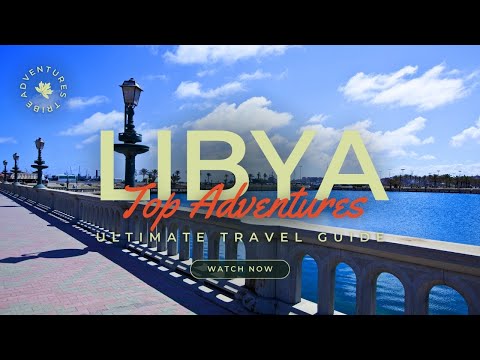
Venturing into the heart of North Africa, Libya remains one of the continent’s most compelling, yet least visited, countries. With its rich history that spans through the times of ancient Carthage and Rome, combined with its vast desert landscapes and pristine Mediterranean coastlines, Libya offers a tapestry of experiences for the intrepid traveler. This guide will delve into everything you need to know about exploring Libya – from essential travel tips to uncovering its top attractions.
### Essential Travel Tips
**Visas and Documentation**: All visitors require a visa to enter Libya. It is crucial to check with the nearest Libyan embassy for the latest visa requirements and travel advisories. Additionally, ensure your passport is valid for at least six months beyond your planned departure date.
**Safety**: Due to political instability in several regions within Libya, travelers should exercise caution. Stay updated with news regarding local conditions and always follow government travel advisories.
**Currency**: The Libyan dinar (LYD) is the official currency. Foreign credit cards are rarely accepted, and ATM access can be unreliable outside major cities; therefore, carrying sufficient cash is advisable.
**Language**: Arabic is the official language. English is understood in tourist areas and hotels but learning some basic Arabic phrases can enhance your interaction with locals.
**Health**: Consult your doctor to receive appropriate vaccinations before traveling. Drinking bottled water and avoiding uncooked foods is recommended to prevent stomach illnesses.
### Top Attractions in Libya
1. **Tripoli’s Medina (Old Town)**: The capital’s heart beats within its Medina where narrow lanes open up into bustling souks (markets) filled with crafts and local goods. Key sites include the Arch of Marcus Aurelius and Tripoli Castle which provides panoramic views of the cityscape.
2. **Leptis Magna**: One of the most spectacular Roman ruins in the Mediterranean, located east of Tripoli, Leptis Magna stands as a testament to Libya’s rich historical tapestry under Roman rule. Explore its vast complex including a well-preserved amphitheater, basilica, and public baths that radiate ancient grandeur.
3. **Sabratha**: Another archaeological gem west of Tripoli that was once part of the Roman Tri-cities or Tripolitania. Its dramatic seaside setting makes it particularly striking – don’t miss Sabratha’s theatre with its intricate backdrop that overlooks the sea.
4. **Cyrene & Apollonia**: Nestled in the eastern part of Libya near Shahhat are these ancient Greek cities that resonate with historical significance tied to Alexander’s conquests. Highlights include Cyrene’s Temple of Zeus and Apollonia’s stunning seaside ruins.
5. **The Libyan Desert**: For those seeking adventure off-the-beaten-path, exploring Libya’s expansive desert landscapes offers an unforgettable experience – from sandboarding on Sahara dunes near Ghat to discovering prehistoric rock art at Wadi Methkandoush.
6. **Benghazi’s Berenice Troglodytica**: Known more commonly just as Benghazi, explore this port city’s modern allure alongside ancient treasures like Berenice Troglodytica ruins showing glimpses into its Byzantine past.
### Cultural Insights
Understanding local customs enhances interactions with residents who are typically welcoming despite political unrest in recent years:
– Dress modestly especially when visiting religious sites.
– Always ask permission before photographing people.
– Sharing tea or coffee often opens doors to friendship; it’s an integral aspect of Libyan hospitality.
### Conclusion
Libya unfolds as an enigmatic land shaped by various civilizations over millennia offering diverse experiences from delving into antiquity at sprawling archaeological sites or embracing solitude amidst desert expanse under starlit skies. While current conditions might pose challenges for visitors planning their trip here is immensely rewarding for those fascinated by history coupled with adventure ensuring memories that last a lifetime within many an adventurer’s tribe.
